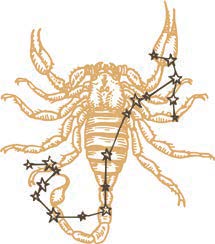
Map Mysteries
Navigating the old-fashioned way
By Bill Fields
On a Golf World assignment in Nebraska in 2013, I procured something for the first time in many years. Not bubble gum, a baseball glove or bottle of Brut 33. I bought a road map.
I had decided, in addition to reporting on the action in the U.S. Senior Open at Omaha Country Club, to see some sand-green golf courses for the first time. There used to be a bunch of them in the Midwest and Southwest; only dozens remained. We were well into the GPS era by then, but as I discovered on my first late afternoon drive to explore the throwback brand of golf, a smartphone wasn’t so smart on the byways of rural Nebraska. The $6.95 map I purchased at a convenience store turned out to be as essential as my cameras and notebook as I drove hundreds of miles around the Cornhusker State.
Maps used to be free at gas stations for decades, of course, as anyone who remembers 40 cents a gallon or less is aware. From the 1920s through the 1970s, all the big brands — Esso and Shell, Gulf and Phillips 66 — offered them as a service and promotion. Sometimes an attendant dug them out of a drawer, but often they were in a display between the fan belts and the wiper blades. Put a tiger in your tank . . . and a map in your glove compartment.
They were tool and talisman, objects of both utility and aspiration. It wasn’t just about where you were going on this trip but where you might go on the next one if you twisted Dad’s arm just right.
A highway map was a neat 4 inches by 8 inches in its pristine state. Unfolded, the 16 panels would cover a lot of the backseat in the family Fairlane. A friend recently remembered how much of a master his father, an engineer, was in map usage, from pinpointing various routes to putting it away so the creases were like new on the next trip.
A map would not age as well in our possession. One trip from Southern Pines to Ocean Drive Beach and it would be rumpled and guaranteed to contain Toast Chee cracker crumbs and Salem ashes the next time it was put into action, perhaps accompanied by a line drawn in Magic Marker from the Sandhills to the shore. (When you got to Loris, South Carolina, you knew you were close.)
It was all there on the map, the size of towns and cities delineated by font and type size. As the state capital, Raleigh got boldface and all caps. Greensboro was bigger than Lexington, which was bigger than Thomasville. You knew Southern Pines had a bigger population than Vass. Hoffman, Candor and Tramway? Tiny places all.
Ours was a North Carolina/South Carolina map family because we rarely ventured out of the two states. But this edition, regardless of which gasoline brand distributed it, still provided for a bit of dreaming. The mileage chart always included Atlanta, a whopping 350 miles from Southern Pines. And there was some extra territory on the map’s edges: a tiny strip of Virginia, containing Danville; a wedge of Georgia denoting Augusta and Athens; a sliver of Tennessee showing Bristol, Johnson City and Kingsport. Also, on the Volunteer State portion, on the outskirts of green-shaded Smoky Mountains National Park, Gatlinburg.
My father was a let’s-get-there kind of guy, especially if home was the destination. He once set out from High Point to Southern Pines during a heavy snowfall, convinced it wasn’t that bad. I got a call that evening in my freshman dorm room at college from the Holiday Inn in Asheboro, where my parents were lodging because the roads were impassable.
After an early 1970s trip to Nashville to visit relatives, “Gatlinburg” became code for Dad’s road ways. Traveling east after our visit, my mother and I pestered him about stopping in Gatlinburg. It would be great, we assured him. He grudgingly relented and made the detour so we could see the wonders of this mountain town he thought was a tourist trap with little redeeming value.
Dad wasn’t always right, but he was right this time. Gatlinburg was all trinket shops. It was hard to find a parking spot. The miniature golf course was poor and crowded. We didn’t stay long. Dad got out the map, took a long look, passed it back to me for folding, lit a cigarette and put the car in gear. We would visit other spots on the map, names in both bold and light type, but as for Gatlinburg, it was definitely one and done. PS
Southern Pines native Bill Fields, who writes about golf and other things, moved north in 1986 but hasn’t lost his accent.





